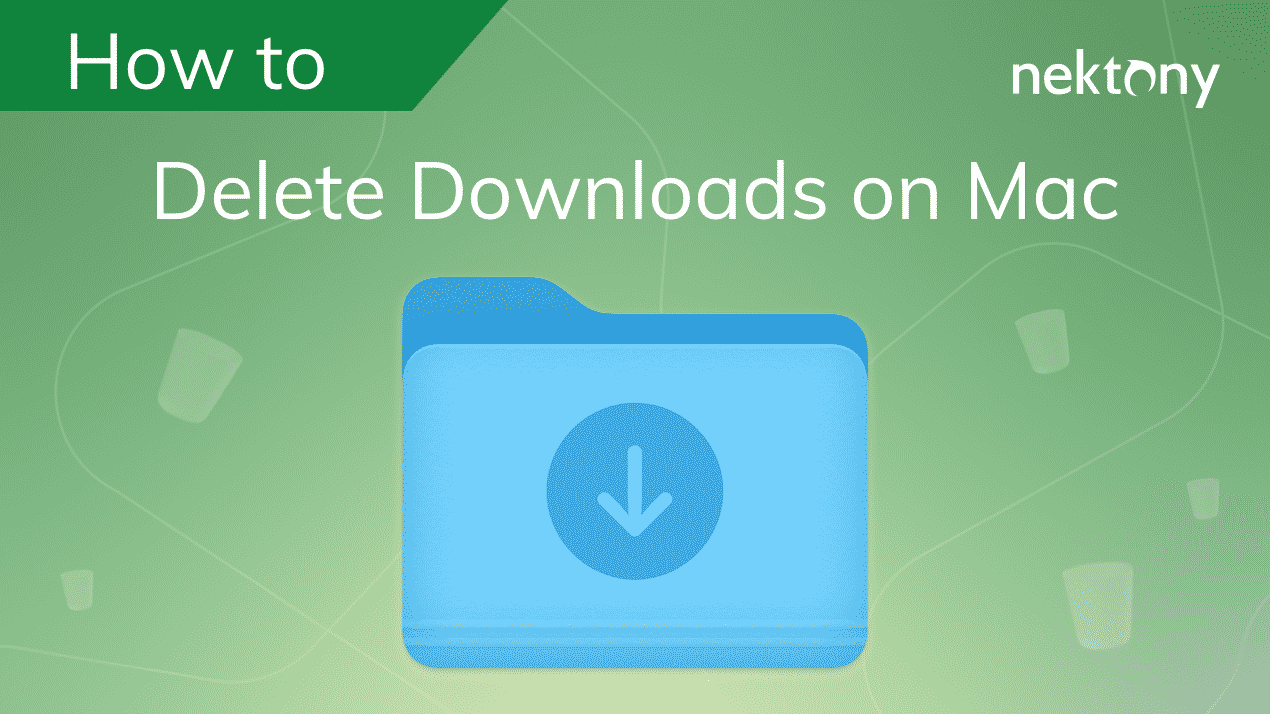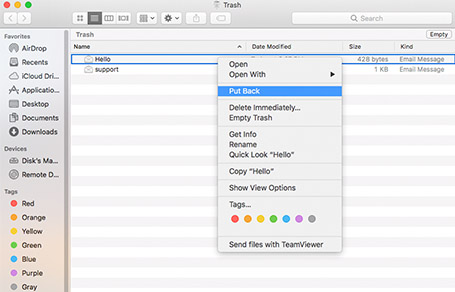- For Windows Vista, 7, 8 and 10 users, you start by pressing the Windows key on your keyboard. Then, type in Downloads and press Enter. This will open the Downloads folder. Once you open the folder, highlight the files to clear by using the mouse or by pressing Ctrl and A. Then, press Delete to clear your Download files.
- Speciality level out of ten: 1. Oct 14, 2010 8:06 AM in response to bob-lo. In response to bob-lo. Taking your questions in reverse order, I don't believe there is a way to have the OS clean Downloads. I also don't believe there is a recommendation from Apple as to how long to keep the download files. Generally every couple of months when I get.
- Read iSecrets.New magazine about gadgets and mobile technology. How to delete downloads o.
Mac users often find their Downloads folder filled with disk images that they previously downloaded from the internet, files that – having already installed the apps – they forgot to delete after unmounting the image. As you may already know, installer files for macOS come with a DMG file extension – otherwise known as an. That is precisely the issue - I want to delete the local copy from my iOS device, but keep the copy on the iCloud drive. Well I don't really need it on the iCloud drive, but I really do need to keep the file and once I move the Documents folder under Sierra to the iCloud drive Deleting/Removing the file will mean no copy 'exists' for my Mac.
System cleanup in one click
It’s practically impossible to go through a day of working on Mac and not download anything: coworkers send us files for review, friends send us new funny memes, or we download new app installers ourselves.
Most of the files we download we only need to see or use once, but we rarely have the discipline to delete them right then and there. Over time, this leads to our hard drives overflowing with files and folders we don’t actually want, straining our system’s resources and pushing us to spend to upgrade storage.

No more! Today, we’ll show you how to clear downloads on Mac in just a few minutes, potentially freeing up gigabytes of space and giving a new boost to your Mac.
Get Setapp to get rid of downloads
Setapp gives you a combo of the best cleanup app, CleanMyMac X, and a powerful duplicate removal app, Gemini.
How to Delete Downloads on Mac

Nearly all files we download to our Macs end up either on your Desktop or in the Downloads folder. While the former is always visible and thus much easier to take care of, the latter quickly turns into the never-ending stream of files.
The first step to learning how to clear downloads on Mac is to find where the Downloads folder is actually located. By default, you can click on the Finder icon in your Dock and then select Downloads from the sidebar, you can choose Downloads from the Finder’s Go menu bar, or you can use the Option + ⌘ + L shortcut.
If you have hundreds or even thousands of files in the Downloads folder, deleting all of them (⌘ + A and Delete) might be risky — what if there’s something you might need? At the same time, going through all files one by one could take hours.
A good solution here is to group all files in the folder by size, so that the heaviest items will automatically be displayed at the top and would be easy to scan through and delete, getting you 80% of results with 20% of the effort.
To group files by size, right-click at the white space within a folder and select Group By ➙ Size. Then delete all the heavy offenders either with ⌘ + Delete or right-click ➙ Move to Trash.
How to find and delete hidden download folders
Most of the time your online files end up in the Downloads folder, which we covered above. However, if you’re frequently using various apps where you download files, they might as well end up in some proprietary folders in the heart of your Mac.
We’ve all been using Zoom, for example, in the past year. We also record a lot of conversations to be able to reference them later. Where those conversations get downloaded, though, might be a mystery to you.
To check on where Zoom stores all downloads, open up Preferences (⌘ + ,) and select Recording. Then click Open next to the “Store my recordings at:” and delete all unnecessary files within that folder. Finally use the dropdown to set that folders to regular Downloads.
Repeat the steps with every app from which you download files.
How to get rid of duplicate files
What happens more often than we realize is that we download a file from somewhere, use it once, and then a few days later forget where it is and download it again. This results in the proliferation of duplicates that serve no useful purpose at all. Deleting them is a no-brainer way to increase the amount of free space on your Mac. But how do you go about it?
Gemini is one of the most popular duplicate removers in the world. If you haven’t been removing duplicates regularly up until now, this app can save you gigabytes of space in seconds. Gemini is able to scan any folder and find the same files across images, video, audio, and more, even if they have different names. The app works for similar files as well, and Gemini preselects everything that’s safe to delete automatically.
Here’s how to use Gemini to delete duplicate files:
- Launch Gemini
- Click the plus icon
- Select Home ➙ Choose
- Click Scan for Duplicates
- Click Smart Cleanup
How to clear downloads on Mac overall
Your Mac’s unused files and folders don’t stop at Downloads. Over the years, you might’ve accumulated so much more that you just don’t notice every day.
Luckily, we can reuse the trick described above for the Downloads folder to find unneeded files across your Mac:
- Open any Finder window
- Search for a . (dot), which is present in any file name
- Switch the search to This Mac
- Right-click and pick Sort By ➙ Size
- Scan the top files and delete the ones you don’t need
This method is still a bit of a hack and while it tells you the size of the files it doesn’t tell you how often you’ve used them. For better results, you need a specialized app.
CleanMyMac X is a very powerful Mac optimizer that’s able to clean and speed up your Mac with just a few clicks. You can, for example, scan your Mac for malware, quit heavy tasks, update and uninstall apps, and more. One of CleanMyMac’s most underused features is called Large & Old Files, which scans all of your Mac for things that take up space and that you’re not using.
To find Large and Old Files with CleanMyMac X:
- Launch CleanMyMac X
- Navigate to the Large & Old Files tab
- Click Scan
- Check the files you don’t need
- Click Remove
How to remove downloads from Mac browsers
Tracking downloaded files through browsers can be a useful way to find the files you don’t need anymore. Browsers themselves don’t keep your files — they just provide a list of recently downloaded items.
After a heavy purge, however, it’s useful to clean up the list of downloads in your browser as well, so you can track everything from scratch.
To remove downloads in Safari:
- Click the Downloads icon in the top bar
- Select Clear
To delete downloads in Firefox:
- Go to Tools ➙ Downloads (⌘ + J)
- Click Clear Downloads
To clear downloads in Google Chrome:
- Go to Window ➙ Downloads (Shift + ⌘ + J)
- Click the three-dot menu and pick “Clear all”
You can also make all these actions effortless with CleanMyMac X, which has a way to clear all history and downloads from all browsers at once:
- Launch CleanMyMac X
- Navigate to the Privacy tab
- Go to each of your browsers and check Downloads History
- Click Remove
As you can see, when you know how to delete downloads on Mac, it takes just a few minutes, especially if you use apps like Gemini and CleanMyMac X.
Best of all, Gemini and CleanMyMac X are both available to you absolutely free for seven days through the trial of Setapp, a platform with more than 200 Mac apps that will supercharge your productivity, from unzipping archives with BetterZip to getting the best sound out of your speakers with Boom 3D. Try every Setapp app today at no cost and be amazed how quickly your life can change for the better.
You will find below the steps to Restore Missing Downloads Folder on Mac, in case you have accidentally removed it or the Downloads Folder is missing from the Dock on your Mac for some other reason.
Deleting Downloads On Macbook
Restore Missing Downloads Folder on Mac

By default, the Downloads Folder should be available in the Dock on your Mac. However, sometimes the Downloads Folder can get accidentally deleted or go missing from the Dock on your Mac for some other reason.
As you will agree, having the Downloads Folder readily available in the Dock on Mac makes it really convenient to access Files, Photos and Songs that you download from the internet.
Hence, we are providing below the steps to Restore Missing Downloads Folder on Mac.
- Related: How to Show and Hide the Dock on Mac
Uninstall Downloads On Mac
Steps to Restore Missing Downloads Folder on Mac
Follow the steps below to Restore Missing Downloads Folders on Mac, in case you had accidentally or intentionally removed this useful Folder from the Dock on your Mac.
1. Click on the Finder icon located in the extreme left corner of the Dock on your Mac.
2. Once the Finder Window is open, click on the Go option located in the top menu bar of your Mac and then click on the Home Option in the drop-down menu that appears.
3. In the Home Directory, Locate the Downloads Folder and drag it towards the Dock on your Mac.
Do not release the Downloads Folder, continue dragging it towards the right of the Dock and drop it to the left of the Trash Can icon, located in the extreme right corner of the Dock on your Mac (See image below)
This will bring the Downloads Folder back to its Default position in the Dock, making it easy for you to access downloaded content on your Mac.
Remove Downloads Folder From the Dock on Mac

In case you do not like the idea of having Downloads folder in the Dock, you can easily remove this folder from the Dock.
1. Right-click on the Downloads Folder in the dock to bring up the options menu.
2. Once the options menu appears, hover your mouse over Options and then click on Remove From Dock Option in the contextual menu that appears (See image below)
The Downloads Folder will be immediately removed from the Dock and placed in the Home Directory of your user account on Mac.